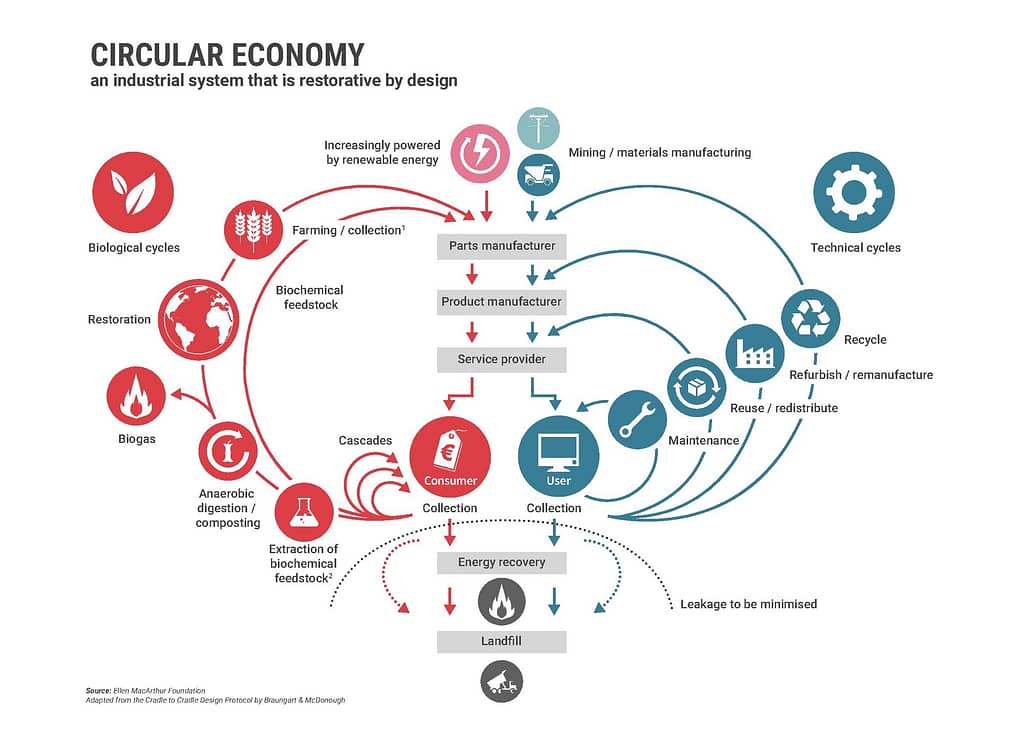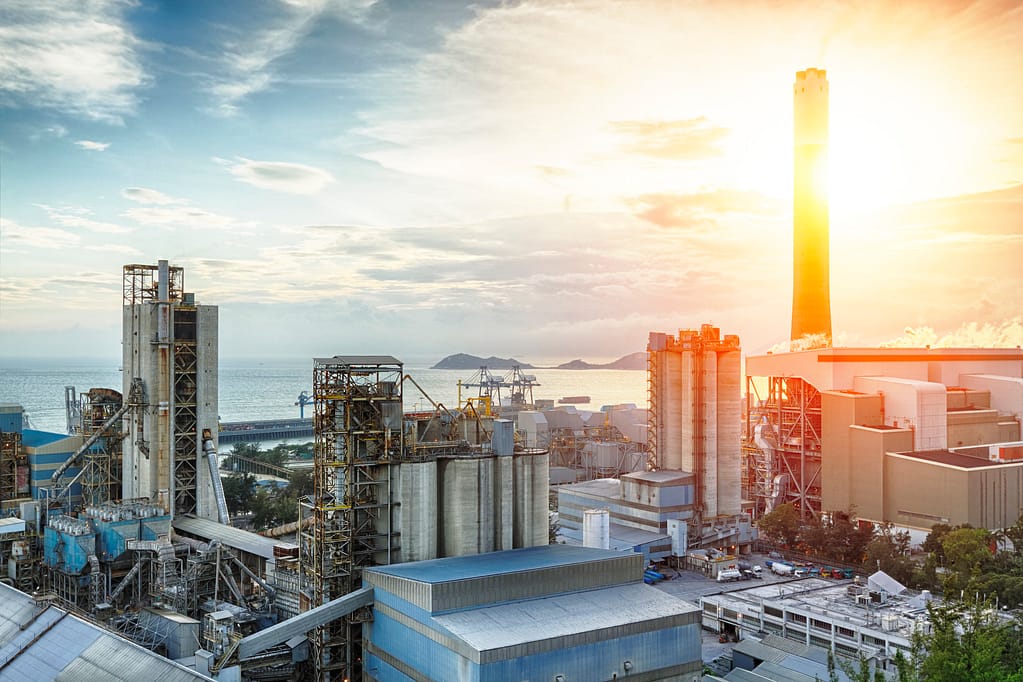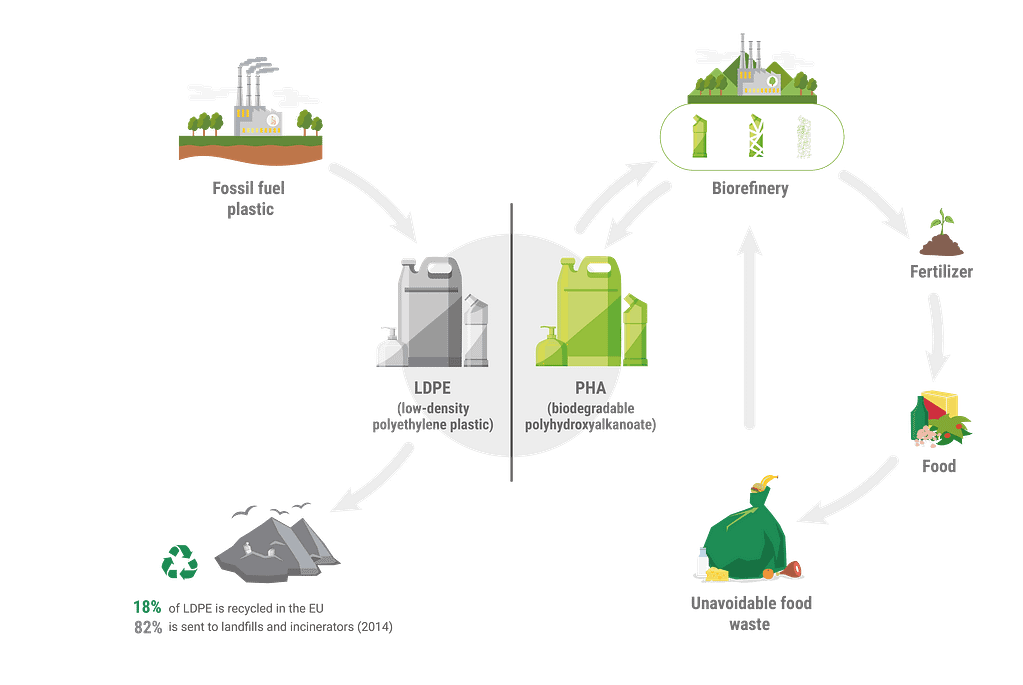The bioeconomy is an increasingly important part of our world today, touching everything from food and plastics to clothing and energy. Ensuring sustainability as the bioeconomy grows is critical.
When you look around you in nature, nothing goes to waste. Everything in our natural world is made from the same common building blocks: sugars, proteins, fats, and minerals. These basic nutrients are reconfigured in countless ways to create all of the diversity and abundance that surrounds us. And when something dies or is no longer necessary? It breaks down, back into those building blocks to once again circle through Earth’s systems. How we engineer our human economy, products, and systems should exactly mirror how the natural world works.
That is the premise behind the bioeconomy, a model for our world where food, fuel, fiber, and material are made only from renewable biological resources. At its core, these renewable biological resources — living things and their byproducts, whether plants, animals, cells, or microorganisms — become the very building blocks of our economy.
Today the bioeconomy is everywhere: We see it in the clothing we wear, the packaging that comes to our house daily, the house we live in, the food we eat, and the energy that fuels our life.
A benign bioeconomy meets three key conditions
The bioeconomy, also called the bio-based economy, has an enormous impact. It is also complex and constantly evolving. With “bio” in its name, the bioeconomy sounds like it should be all-natural and sustainable.
But for the bioeconomy to truly be sustainable and circular, it must meet three conditions.
First, it must use fundamentally renewable biological feedstocks. This can be seaweed or trees, hemp or microalgae. The key is that these naturally occurring resources are renewable — meaning they are replenished at a rate equal to or faster than consumption rates. If we dedicate ever-more farmland to growing crops for the bioeconomy, then it would not be renewable.
Second, the bioeconomy must maximize the varied types and cycles of biological resources, avoiding competition with food security as an utmost priority. Valuable biomass can be cultivated through primary production, but should also be collected via supply chain residues and post-consumer waste, and sequestered from waste gases. A sustainable bioeconomy will prioritize and maximize the potential of biological by-products and residues to reduce reliance on primary production and its associated land use and biodiversity pressures.

Third, the bioeconomy must protect and contribute to the biological cycle, Earth’s natural system. Earth has already designed the perfect, waste-free system: nutrients are recycled continuously, and nothing is discarded. As we redesign our own world towards circularity, we can copy this biological cycle so that we extract, use, and manage natural resources in a way that their nutrients are safely and effectively put back into the environment.
Designing the bioeconomy on these criteria is critical to protect our planet and avoid the “take-make-waste” model that has wreaked havoc through our existing linear economies.
What came before the bioeconomy?
First, a quick look back: To understand the potential benefits and impacts of the bioeconomy, it is helpful to understand where we have come from: a fossil fuel economy. Fossil fuels — the decomposing remains of ancient plants and animals that have transformed into carbon-rich deposits — have powered our world for generations. They are technically also considered organic biomass, but an important distinction is that they are not renewable. We have a finite amount still remaining. For every four barrels of oil we consume, we discover only one more.
But, these fuels changed our world and kickstarted decades of innovation, beginning with the Industrial Revolution. They offered a huge increase in the amount of productive energy available. One liter of gasoline has around the energy equivalent of 9 to 10 days of human labor. Fossil fuels are also used directly in products including chemicals, textiles, and packaging, and they form the basis of most plastics.
Of course, now we know the use of fossil fuels presents huge problems. They release CO2 and other greenhouse gases, leading to global warming and climate change.

Our bioeconomy is now considered part of the Fourth Industrial Revolution, which the World Economic Forum identifies as a period of accelerating innovation in science and technology in the digital, physical, and biological realms. We have seen an increase in interest in the bioeconomy over the past two decades. In 2012, the European Commission launched its sustainable bioeconomy strategy, and today, the EU bioeconomy encompasses agriculture, aquaculture and fisheries, forestry, bioenergy, construction, textiles, and bio-based products. It is a substantial part of the economy, accounting for 8% of the EU workforce and representing annual turnover of 2 trillion euros. From 2010 to 2015, the use of biomass in the EU grew by around 8.5%, mainly for bioenergy and bio-based materials.
The bioeconomy in action
Let’s take a closer look at food waste, importantly unavoidable food waste, the remnants of our day-to-day life that we cannot consume, like coffee grounds and eggshells, vegetable peels and orange rinds. In Amsterdam, 23,000 – 30,000 tons of unavoidable food waste are incinerated annually. Instead of burning this valuable resource through biorefinery processes, it can be transformed into high-value goods — fertilizer for use in farming or soil regeneration processes, biopolymers for use in chemical or bio-based material production. Bioplastics currently make up just 1% of the more than 368 million tons of plastic produced annually. But the market and demand are growing.
One example is PHA, or polyhydroxyalkanoate, a completely compostable and biodegradable plant-based material. To make this, bacteria feast on vegetable oil, sugars, or methane gas, storing the energy from their food in polymers. The microorganisms then undergo a process to burst their membranes and remove the polymers, which are then used to create your takeout containers, straws, and even liquor bottles. One kilogram of PHA can be derived from 4 kilograms of unavoidable food waste. PHA is a direct substitute for LDPE (low-density polyethylene), a technical petrochemical (or fossil fuel) plastic commonly used in packaging. Replacing LDPE with PHA can have huge compounding impacts on our environment. These plastics also biodegrade within six months and the nutrients can be completely reintroduced into our earth.

Not all bio-based plastics are sustainable nor are they biodegradable under all conditions. PLA, polylactic acid, is another polymer, produced by fermentation of carbohydrates like corn starch or sugarcane. It is commonly used as a filament in 3D printing. While it will decompose quickly under controlled composting conditions, without these, for example in a landfill, it could take 100 to 1,000 years to decompose. It can also contaminate the recycling process if mixed with petrochemical plastics.
Problems in the bioeconomy
Of course, the bioeconomy is far from perfect. For one thing, it is clear that the lack of defined regulation and transparency in the bioeconomy, especially between the academic community and commercial sector, can seed confusion. And it can fuel the development of bio-based products that do not meet our three-part criteria of being renewable and part of the biological cycle.
Just like with the PLA plastic example, a shirt can be advertised as bio-based, but if cotton is fused together with a synthetic polyester-based material using high heat, then it becomes a semi-synthetic, semi-organic material. It can never biodegrade. Instead, the shirt must be incinerated at the end of its life.
There is also the concern of our limited agricultural land availability. By 2050, our worldwide population will climb to 9.8 billion, meaning we will need more food and resources, further straining natural, social, and economic systems that are already taxed. Biomass cannot be a direct substitute for fossil fuels. One liter of gasoline is equivalent to nearly 26 tons of biomass, and in one day, we burn the fossil fuel equivalent of all the biomass that Earth produces in one year. In the shift towards a sustainable bioeconomy, we will need to redesign our current systems — in particular radically increasing the efficiency of our global agrifood system — and carefully prioritize the use of biological resources based upon human needs and planetary boundaries.

Of the 1.2 billion tonnes of biomass used in the EU in 2015, 1 billion tonnes were from primary sources, such as agricultural, forestry, and aquaculture. But there are other types of biomass we can use — things like recycled paper, by-products from agriculture such as inedible stalks, leaves, and bagasse (fibrous material from crushed sugarcane), as well as the unavoidable food waste like banana peels, coffee grounds, and shells. These sources account for the remaining 0.2 billion tonnes used in 2015. Transitioning to these alternatives will alleviate pressure on agricultural and protected lands, avoid competition with food security, and foster the growth of a sustainable bioeconomy.
Creating a circular, sustainable bioeconomy
The transition towards a renewable, regenerative biobased economy needs to be managed properly in order to protect and nurture the natural world. A 100% switch from fossil fuels to biomass would actually cause our renewable feedstocks to become critically vulnerable. It is time for a cultural shift in how we think about the materials we use. The European Commission is taking the first steps to track the progress of its goal of a sustainable and circular bioeconomy with its EU Bioeconomy Monitoring System. Projects like Materiom are providing key knowledge on sustainable bio-material alternatives, with the goal of accelerating the development of regenerative materials.
All of us — businesses and consumers, policymakers and individuals — must think systemically and responsibly about how we manage Earth’s natural capital. We can also facilitate critical discussions within companies, across value chains, and with national and municipal policymakers. Putting pressure on these key players will move us toward a sustainable and circular bioeconomy that benefits us all. For example:
- Do you know where your food waste is going? It is probably being incinerated or sent to a landfill. Lobby local policymakers to harness the potential of unavoidable food waste in closing nutrient loops.
- What materials are in the products you use? Are they renewable or not? Push your favorite brands to examine their materials, especially in single-use and fast-moving consumer goods like packaging. Buy from companies that are using bio-based materials sustainably.

The Global Metabolism Initiative
Later this year, our Institute, a non-profit think tank, is launching the Global Metabolism Initiative, an annual investigation into the health of our planet. Focusing on the bioeconomy in 2021, we are analyzing annual rates of biomass extraction and consumption and the key technologies and incentives that need to be put in place to ensure that the bioeconomy develops in a way that is truly sustainable and can compete with the linear economy. Our work will tackle critical questions such as:
- How has global consumption of biomass changed from 2000 to 2020?
- What is the current and projected cross-sectoral demand for biomass, considering energy, food, chemicals, textiles, the built environment, and manufacturing?
- What effects will factors such as population growth and climate change have on biomass productivity in the coming years?
- What new sources of biomass are we increasingly using, and what are the associated opportunities and risks?
Learn more about the bioeconomy — and how to ensure it develops sustainably — by connecting with our Global Metabolism Initiative. If you are interested in collaborating with the GMI, please get in touch: [email protected].




